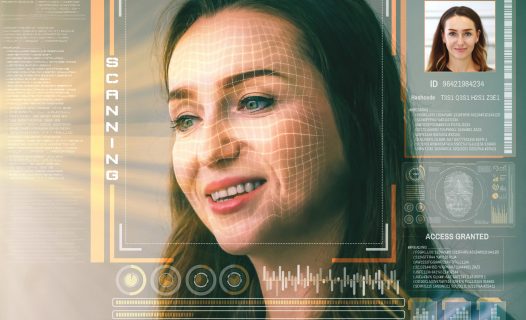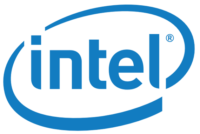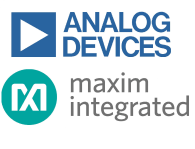Xailient’s Face Recognition AI technology gives users the ability to recognise a person’s face. With Edge Face Recognition, you’ll always be able to see who’s visiting.
Cameras produce an abundance of data, but when you have a job to do most of this data is just excess. It’s peoples’ faces you want to see – family members, frequent visitors, and intruders.
AI is great at sifting through oceans of data so that you can focus on people.
Face Recognition is the task of recognising a person (or people) in an image or a camera’s video clip. Sometimes, this also includes the location(s) of people in the image/video identified by an artificial rectangular box drawn around their face. Face Recognition is a specific kind of detection, which is a more general vision task.
Face Recognition is when you search a database of known faces (usually created by the user) to see if the detected face in question matches one of those faces. If it matches, we assign that identity and name to the detected face. If no match is found, it will be tagged as an UNKNOWN face.
When combined with person detection, Face Recognition ensures you can tell familiar faces from strangers’ faces. This is a very attractive selling feature compared to standard person detection.

Traditionally, security cameras have relied on motion detection to alert the user if something interesting (e.g. a moving vehicle, person, etc.) has been detected. This is to reduce the amount of video data that needs to be sent to the cloud and stored (since most video contains uninteresting static background).
The problem with traditional approaches is that motion detection generates lots of false alarms due to things like changing lighting conditions and moving trees, which is very annoying to users. We refer to this as Dumb Motion Detection.
Recently, thanks to advances in AI and computer vision, we now have Smart Motion Detection.
Smart Motion Detection works by processing each and every motion clip using an AI model (e.g. Person Detection) to determine if a person was in that clip. If so, then the clip along with the alert saying “Person Detected” is sent to the user. If not, that clip can be discarded as a false alarm.
Running Face Recognition at the Edge has many benefits. These include:
With Dumb Motion Detection, every motion clip is uploaded to the cloud where the AI is running. This means shorter battery life and costly cloud processing. It also has high latency with the time taken to process in the cloud and send back an alert. Privacy issues with people’s personally identifiable information (e.g., faces) stored in the cloud are also a significant risk.
The benefit of running Face Recognition AI on the Edge (instead of the cloud) is that private and sensitive data is not sent to the cloud. Cloud processing bills go to $0, and you get faster alerts since it’s all being processed on the camera itself.
Since you no longer need to upload every Dumb motion clip, you significantly prolong battery life and save massively on cloud processing costs.
Benefits of Face Recognition at the Edge also include increased robustness. In an application, identity determined from Face Recognition usually drives a decision or action. Having this technology at the Edge means that the system can continue to work even if the network is unstable or down.
Face recognition at the Edge provides the best data. It allows for high quality images that can be cropped and can get higher resolution faces from part of a scene. This is not possible off-device or in the cloud with transmitted and compressed video.
The Edge offers a more efficient architecture design. The benefits of this can be seen in terms of better scalability. As a distributed compute model, Edge Face Recognition provides the benefit of not increasing server compute loading with the growth of more devices.
The Edge also serves as an intelligent gatekeeper for reducing video traffic to the server (i.e. it only sends videos with faces or unknown faces to the server). Additionally, it can redirect server compute resources to more advanced analytics.

Finding and detecting faces (drawing boxes around them) is called Face Localization. This is more generally termed Object Detection.
As it turns out, detection is the most difficult task in computer vision AI and uses the most amount of compute resources and power, almost 59,000 times more compute than the most common vision task.
Xailient has leveraged 10-years of R&D to build the world’s smallest and fastest object detector to fit on extremely tiny devices running on exceptionally low power.
As a result, object detection for faces, people, pets, vehicles, and packages can be run on resource-constrained Edge devices, like the camera itself.
You can even train your custom detection models to run on your cameras using Xailient’s Orchestrait, an AI lifecycle management tool.
Xailient’s Edge Face Recognition is smaller and more efficient. It can be deployed in software on most existing camera platforms (requiring no special hardware or compute). This means that it can be deployed on more devices or added to a whole portfolio of devices.
Xailient’s Edge Face Recognition increases battery life. It can lower operating power compared to competitors, resulting in energy savings. Using local intelligence to reduce the amount of video transmitted to the cloud means overall system power savings for the camera.
Xailient offers a holistic approach to managing Face Recognition, allowing for custom deployment that suits the life-cycle needs of the Face Recognition models from development, to pre-production, to production, to model improvements. This approach provides visibility, insights into in-field usage, and performance of the Face Recognition algorithm. Continual monitoring identifies potential risks and improvement opportunities.
Automated and privacy-compliant training data collection is another benefit of Xailent’s Face Recognition. This means training data from in-field deployment is used to better improve and optimize the algorithm for an application in a privacy-compliant way.
Xailient’s Face Recognition offers model management improvements. This allows for training improved versions of Face Recognition with the collected application data. In addition to this, you own your application training dataset, Face Recognition improvements, and the data foundation to train new AI features based on your application.
With Xailient’s Edge Face Recognition, you own your Computer Vision AI destiny.
Face recognition allows you to recognize a person’s face so that you can see who’s at your property. Face Recognition can differentiate between family members, frequent visitors, and unknown faces to keep you and your family safe.
Face Recognition is when you search a database of known faces to see if a detected face matches one of those faces. If it matches, that identity and name is assigned to the face. If no match is found, it will be tagged as an UNKNOWN face.
When combined with person detection, Face Recognition allows you to tell familiar faces from strangers’ faces. This is an attractive selling feature compared to standard person detection.
The issue with past approaches is that motion detection generates lots of false alarms. We refer to this as Dumb Motion Detection.
Smart Motion Detection works by processing each and every motion clip using an AI model to determine if a person was in that clip. If so, then the clip along with the alert saying “Person Detected” is sent to the user. If not, that clip can be discarded as a false alarm.
Running Face Recognition at the Edge has many benefits. These are:
With Dumb Motion Detection, every motion clip is uploaded to the cloud where the AI is running. This means shorter battery life, costly cloud processing, and high latency. Privacy issues with people’s personally identifiable information stored in the cloud are also a significant risk.
The benefit of running Face Recognition AI on the Edge (instead of the cloud) is that private and sensitive data isn’t sent to the cloud. Cloud processing bills go to $0, and you get faster alerts since it’s all being processed on the camera itself.
Since you no longer need to upload every Dumb motion clip, you can also significantly prolong battery life.
Face recognition at the Edge provides the best data. It allows for high quality images that can be cropped and can get higher resolution faces from part of a scene. This is not possible off-device or in the cloud with transmitted and compressed video.
Face Recognition at the Edge also increases robustness. In an application, identity determined from Face Recognition usually drives a decision or action. Having this technology at the Edge means that the system can continue to work even if the network is down.
The benefits of an efficient architecture design can be seen in terms of better scalability. As a distributed compute model, Edge Face Recognition provides the benefit of not increasing server compute loading with the growth of more devices.
The Edge also serves as an intelligent gatekeeper for reducing video traffic to the server. Additionally, it can redirect server compute resources to more advanced analytics.









January 18, 2024
NEWS PROVIDED BY Xailient Inc. 18 Jan, 2024, 01:13 ET SYDNEY, Jan. 18, 2024 /PRNewswire/ — Xalient customer Abode, a leading provider of DIY smart home security solutions, has been recognized for their innovative new product, the Abode Edge Camera. Xailient AI runs inside the Abode Edge Camera, watching for anomalies like package deliveries or strangers on the […]
November 1, 2023
NEWS PROVIDED BY Xailient 25 Oct, 2023, 09:05 ET Wi-Fi HaLow™ Technology Enables Long-Range, Low-Power Connectivity for Smart Cameras SYDNEY and IRVINE, Calif., Oct. 25, 2023 /PRNewswire/ — Xailient, the leader in edge artificial intelligence (AI) for computer vision, today announced a strategic partnership with Morse Micro, a fast-growing fabless semiconductor company focused on Internet of Things (IoT) connectivity. Together, they […]
We see things differently in the dynamic field of computer vision AI
Edge Computing
Edge Computing
We empower companies to bring computer vision AI products to market
faster and with less investment
You’ll get insights and resources into: